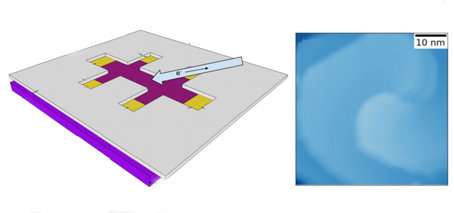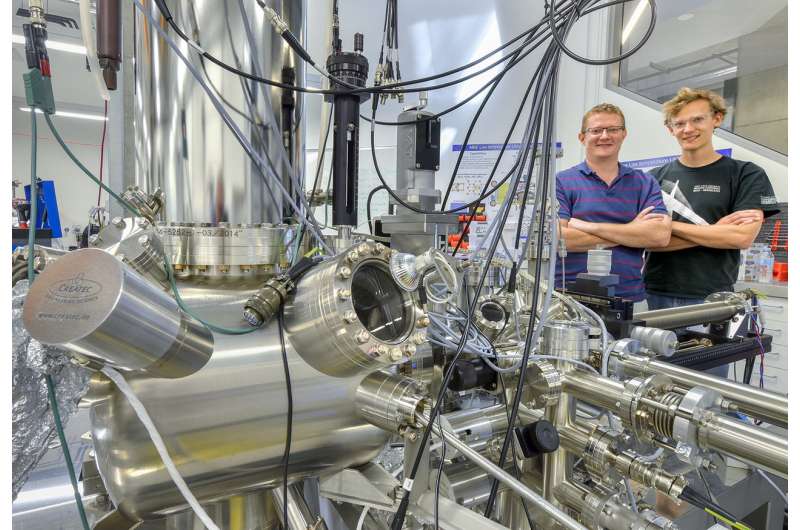Switching conduction mode—a step towards topological transistors

FLEET researchers achieved a significant landmark in the search for a functional topological transistor in 2017, using an applied electric field to switch the electronic conduction mode of a topological material.
A 'gate' electrode was used to switch the conduction mode in the topological material Na3Bi.
Na3Bi is a topological Dirac semimetal (TDS), a material that has been referred to as '3-D graphene."
"Electrons travelling within a TDS behave similarly to graphene, moving relativistically (ie, as if they have no mass)," explains FLEET associate investigator Dr. Mark Edmonds, a co-author on the paper.
Conduction mode in the TDS was switched between 'n-type' conduction (in which the current is carried by electrons) and 'p-type' conduction (in which the current is carried by holes – effectively, missing electrons).
The work represented the first successful, simple, thin-film transistor made from a topological semimetal and the first transistor made from Na3Bi.
As the first transistor made from any topological Dirac semimetal in a solid-state, thin-film form, this shows that the technology is amenable to processing into electronic devices over large areas.
As the first demonstration that electronic properties can be successfully manipulated by an applied electric field, it was also a step on the way to more-complex, switchable topological transistors.
In complex, switchable topological transistors, the key is the ability to switch a material between a conventional insulator, and the topological state. Ideally, such switching would be accomplished via an electric field induced by a voltage applied to the transistor's gate electrode.
Such technology would use a topological Dirac semimetal as the channel material, balanced between a conventional insulator and a topological insulator.

"These results make the topological Dirac semimetal Na3Bi an incredibly fertile platform for exploring some very exciting new areas of physics," says FLEET Ph.D. student James Collins, a co-author on the study.
"It means Na3Bi is an ideal starting point to realise control over the topological properties of a material."
This work is therefore a significant step towards two key goals for FLEET's Research theme 1, which seeks to develop ultra-low resistance electronic paths via topological materials:
- An atomically-thin topological insulator with bandgap greater than 77 degrees Kelvin
- Successful switching from a conventional insulator to a topological insulator.
The project represented a successful interdisciplinary collaboration between experts in thin-film growth and electronic characterisation at Monash University, and theoretical modelling led by FLEET Associate Investigator Dr. Shaffique Adam at the National University of Singapore.
The study was published in Physical Review Materials in October 2017, Vol. 1, issue 5.
Topological transistors and FLEET
The succesful switching of a material from conventional insulator to topological insulator is an important step towards topological transistors.
Topological insulators are novel materials that behave as electrical insulators in their interior, but can carry a current along their edges. Unlike a conventional electrical path, such topological edge paths can carry electrical current with near-zero dissipation of energy, meaning that topological transistors can switch without burning energy. Topological materials were recognised in the 2016 Nobel Prize in Physics.
Topological transistors would 'switch," just as a traditional transistor. The application of a gate potential would switch the edge paths in a Na3Bi channel between being a topological insulator ('on') and a conventional insulator ('off').
More information: Jack Hellerstedt et al. Electrostatic modulation of the electronic properties of Dirac semimetal Na3Bi thin films, Physical Review Materials (2017). DOI: 10.1103/PhysRevMaterials.1.054203
Provided by FLEET



















